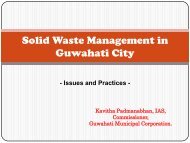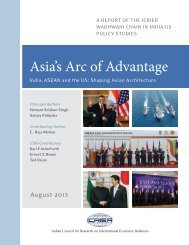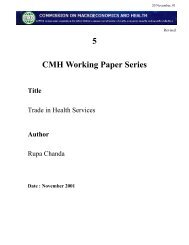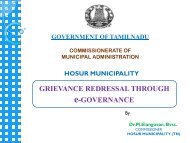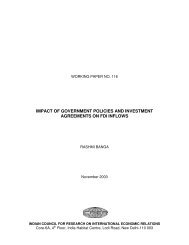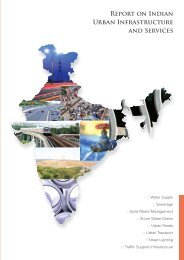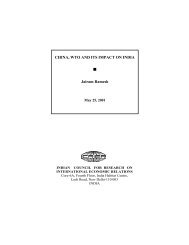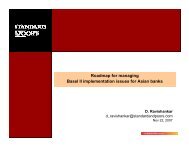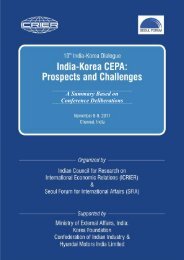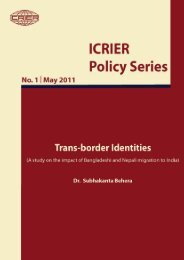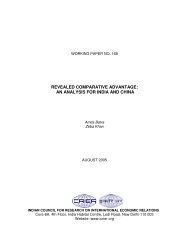Arpita Mukherjee Ramneet Goswami January 2009 - icrier
Arpita Mukherjee Ramneet Goswami January 2009 - icrier
Arpita Mukherjee Ramneet Goswami January 2009 - icrier
You also want an ePaper? Increase the reach of your titles
YUMPU automatically turns print PDFs into web optimized ePapers that Google loves.
A key regulatory development in the marketing sector took place in 2002, wherein<br />
marketing of transportation fuels, such as motor sprit, high-speed diesel and aviation turbine<br />
fuel was opened to the private sector. However, this segment continues to be dominated by<br />
NOCs, and private players including Reliance, Essar and Shell have only 19 per cent market<br />
share. 106<br />
In 1997, the Administrative Pricing Mechanism (APM) was dismantled in a phased<br />
manner. In April 2002, petroleum products imports were liberalized, and APM for all<br />
petroleum products other than LPG and superior kerosene oil was eliminated. 107 However,<br />
the government continued to decide the retail price of petrol and diesel.<br />
In April 2006, the PNGRB Act, 2006 was enacted and an independent regulator in the<br />
downstream sector was set up in October 2007. In December 2006, the government also<br />
notified the ‘Policy for Development of Natural Gas Pipelines and City or Local Gas<br />
Distribution Networks’ to provide a framework for the future growth of pipeline<br />
infrastructure in the country and to promote investment from both the public and private<br />
sectors in natural gas pipelines and city or local natural gas distribution networks. 108<br />
3.1.3 Renewable Energy<br />
The oil shocks of the 1970s led to an increase in crude oil prices and raised concerns<br />
about energy security. India started to seriously focus on new and renewable sources of<br />
energy for sustainable development and energy security. In 1981, the government established<br />
a Commission for Additional Sources of Energy (CASE) in the Department of Science and<br />
Technology, along the lines of the Space and Atomic Energy Commissions. In 1982, CASE<br />
was incorporated in the newly created Department of Non-Conventional Energy Sources<br />
(DNES), which in 1992 became a full-fledged Ministry, namely, the Ministry of Non-<br />
Conventional Energy Sources (MNES). The name was subsequently changed to Ministry of<br />
New and Renewable Energy (MNRE) in 2006. India is the only country in the world which<br />
has a separate and dedicated ministry for developing and promoting non-conventional energy<br />
sources.<br />
Although Renewable Energy Technologies (RETs), such as biogas plants and improved<br />
cooking stoves existed as early as the 1940s, renewable energy programs started only after<br />
the creation of CASE. The early programs were initiated with a target-oriented supply-push<br />
approach and were driven by direct subsidies from the government. They focused on the<br />
development, dissemination and demonstration of various RETs. Even though this policy was<br />
successful in creating a fairly large and diversified manufacturing base, it did not lead to<br />
commercialization due to various reasons such as subsidies, low reliability of the devices,<br />
lack of remunerative tariffs for RET-generated electricity, and lack of consumer-desired<br />
features (in terms of the services and financial commitments) in the design and sales package.<br />
With liberalization in the 1990s, there was a shift from financial to fiscal incentives and<br />
the renewable energy programs focused on commercialization and greater involvement of the<br />
private sector. The Ministry was restructured in 1993 into sectoral groups of (a) rural energy,<br />
(b) urban/industrial energy, and (c) electricity generation. Through the restructuring, the<br />
emphasis shifted towards policies, planning and institutional linkages to promote RETs<br />
106 Ministry of Petroleum and Natural Gas (2008).<br />
107 Oil companies can now take independent decisions based on competitive conditions to set their prices for<br />
petroleum products. Thus, public sector oil companies have to face a competitive marketing environment.<br />
108 Ministry of Petroleum and Natural Gas (2006).<br />
31



